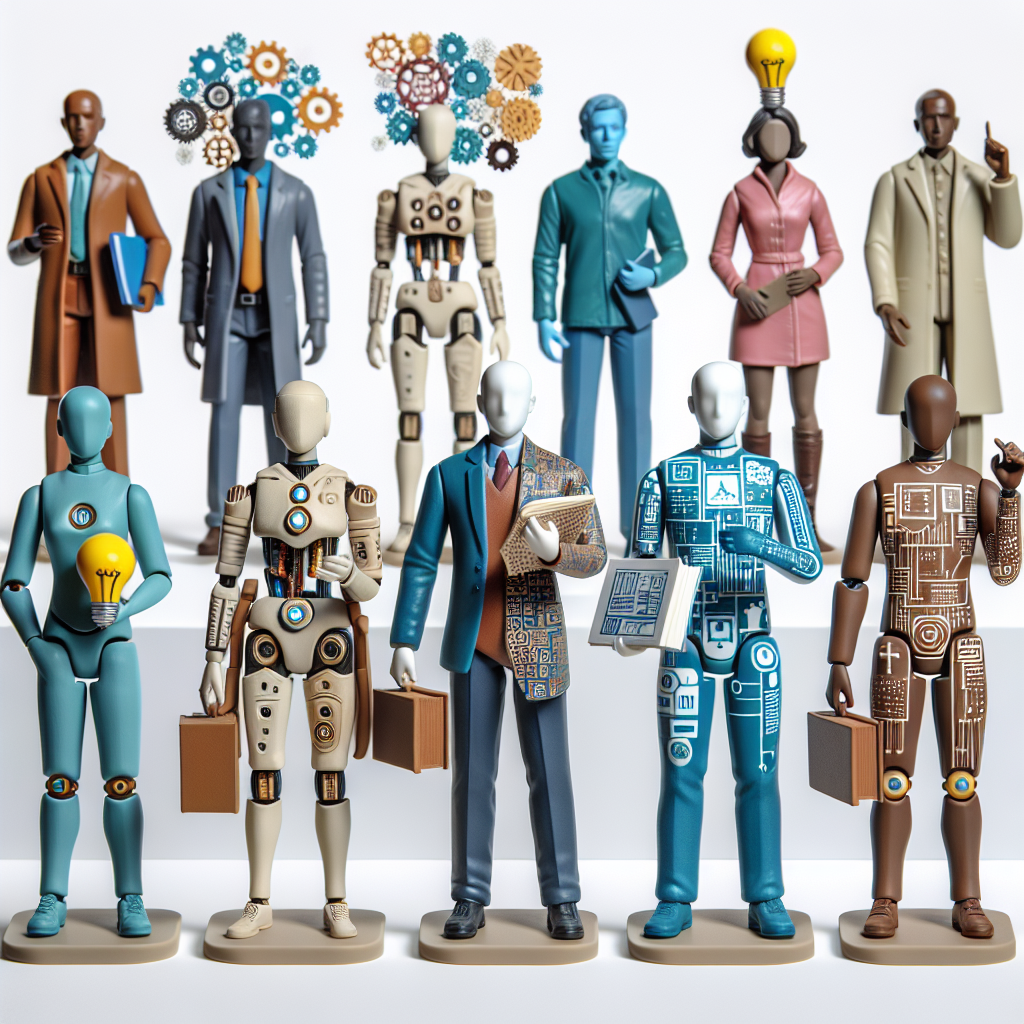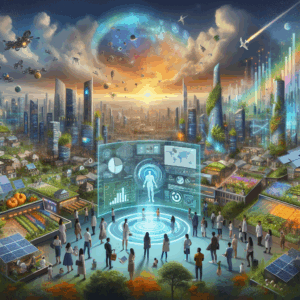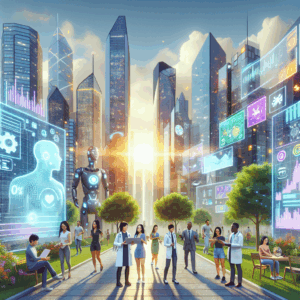Now I have enough information to write a comprehensive blog post about the ChatGPT Action Figures trend. Let me create the blog post based on the research I’ve gathered.
ChatGPT Action Figures Trend and its Viral Impact
In the ever-evolving landscape of social media trends, few have captured public imagination quite like the ChatGPT action figure phenomenon. This fascinating intersection of artificial intelligence and pop culture has turned ordinary individuals into collectible toy versions of themselves, all with the help of AI technology. Let’s dive into how this trend started, why it went viral, its impact on pop culture, and what the future might hold for AI-generated personalized toys.
Origins of the ChatGPT Action Figure Trend
The ChatGPT action figure trend, also known as the “AI Barbie trend” or “Barbie Box Challenge,” began gaining significant traction in early 2025. While there isn’t a single creator credited with starting the movement, it emerged shortly after other AI image generation trends like the “Ghibli-style AI art” that had already captured social media users’ attention.
The concept is simple yet captivating: users upload their photos to ChatGPT (specifically models with image generation capabilities) and instruct the AI to transform them into stylized action figures or dolls, complete with branded packaging, accessories, and the distinctive toy-like aesthetic reminiscent of collectible figures.
What makes this trend particularly appealing is its accessibility. Anyone with access to ChatGPT can transform themselves into a miniature collectible version that looks professionally manufactured, mimicking the commercial toys we’ve grown up seeing from brands like Marvel, DC, or Mattel.
The Viral Explosion Across Social Media
The trend rapidly spread across multiple social media platforms, starting with professional networks like LinkedIn before expanding to Instagram, Facebook, TikTok, and beyond. Users began sharing their AI-generated action figures under hashtags like #AIActionFigure, #MyChatGPTToy, and #BarbieBoxChallenge, creating a viral feedback loop that encouraged more participation.
Several factors contributed to the trend’s virality:
-
Nostalgia Factor: The visual aesthetic taps into childhood memories of collecting action figures and dolls, creating an immediate emotional connection.
-
Personalization: Unlike previous AI image trends, this one is deeply personal—it’s not just transforming any image but creating a miniature version of oneself.
-
Commercial Quality: The images often look remarkably professional, with packaging that mimics real toy products, complete with logos, taglines, and fictional marketing copy.
-
Ease of Creation: The process is straightforward enough that even those with limited technical knowledge can participate, requiring just a photo upload and a prompt.
-
Shareability: The results are highly shareable, providing both entertainment value and a form of digital self-expression.
Some prominent examples helped fuel the trend’s growth. Australian wildlife photographer Robert Irwin, son of the late Steve Irwin, was transformed into an action figure by the underwear brand Bonds Australia, which he modeled for in 2025. This high-profile adoption helped legitimize and amplify the trend beyond just individual social media users.
Impact on Pop Culture and Digital Identity
The ChatGPT action figure trend represents more than just a fleeting social media fad—it’s a fascinating evolution in how people represent themselves in digital spaces and engage with AI technology. Its impact extends to several domains:
Redefining Digital Self-Expression
In an age where digital identity is increasingly important, AI action figures provide a novel way for people to present themselves online. Unlike traditional profile pictures or avatars, these toy versions combine elements of fantasy, nostalgia, and personal branding in a single image.
Democratizing Personalized Merchandise
Before AI image generation, creating a custom action figure of oneself would require expensive 3D scanning, modeling, and manufacturing. This trend democratizes the experience, allowing anyone to visualize themselves as a collectible toy without the associated costs and technical barriers.
Blurring Entertainment and Technology
The trend represents a growing convergence between entertainment, social media, and AI technology. It demonstrates how emerging technologies are being adopted first for creative play and social sharing before potential commercial applications emerge.
Extending the “Barbiecore” Aesthetic
Following the massive cultural impact of Greta Gerwig’s “Barbie” film, this trend extends the “Barbiecore” aesthetic into the digital realm, combining nostalgic elements of toy packaging with contemporary AI capabilities.
The Future of AI-Generated Personalized Toys
As this trend continues to evolve, it points to several potential futures for the intersection of AI, personalization, and physical products:
From Digital to Physical
The natural evolution of this trend may be the development of services that can turn these AI-generated designs into actual physical products. 3D printing technology, combined with AI design, could make personalized action figures accessible to anyone.
Commercial Adoption
Toy manufacturers and entertainment companies might incorporate AI-generated personalization into their product offerings, allowing consumers to create custom action figures based on themselves or even blend their features with established characters.
Sustainability Implications
Experts have noted the potential for AI-customized toys to extend product lifecycles. Unlike mass-produced toys with fixed features, AI toys could potentially evolve with a child’s interests, reducing waste and supporting more sustainable consumer habits.
Privacy and Identity Considerations
As with any trend involving personal images and AI, questions about data privacy, consent, and the potential for misuse arise. The future development of this technology will need to address these concerns.
Beyond Static Figures
The next iteration might combine this visual transformation with other AI capabilities—imagine action figures with embedded AI that could interact based on the personality and interests of the person they represent.
How to Create Your Own ChatGPT Action Figure
For those interested in joining the trend, the process is relatively straightforward:
-
Use ChatGPT with Image Generation: Access ChatGPT models that support image generation capabilities (like GPT-4o).
-
Upload a Photo: Provide a clear photo of yourself that you’d like transformed.
-
Create a Detailed Prompt: Write specific instructions asking ChatGPT to create an action figure version of your photo. Include details about packaging style, accessories that represent your interests, and any specific aesthetic preferences.
-
Refine as Needed: You may need to adjust your prompt several times to get the exact look you’re hoping for.
-
Share Responsibly: If sharing your creation on social media, consider the privacy implications of the images you use and create.
Note that users on the free version of ChatGPT can only use image generation a limited number of times per day, so plan accordingly.
Conclusion
The ChatGPT action figure trend represents a fascinating moment in our evolving relationship with AI technology. Far from being just another social media fad, it demonstrates how quickly new technologies are being adapted for creative expression and social connection.
As AI continues to advance, we can expect even more innovative ways for people to represent themselves digitally and potentially bridge the gap between virtual creations and physical objects. Whether this trend evolves into a mainstream commercial product or remains primarily a social media phenomenon, it highlights our enduring fascination with toys, collectibles, and seeing ourselves transformed through the lens of pop culture.
The action figure trend may eventually fade, but it offers a glimpse into a future where the boundaries between digital identity, AI creativity, and physical products continue to blur in increasingly personalized ways.
Sources & Links
- E! Online: ChatGPT Action Figures? Breaking Down the AI Barbie Doll Trend
- Scioto Post: ChatGPT Trend Turns Users Into Custom Action Figures
- Newsweek: How to Turn Photos Into Viral Action Figures by Using ChatGPT
- People Magazine: What Is the AI Barbie Trend? All About the ChatGPT-Generated Trend
- Hindustan Times: What is the ChatGPT action figure prompt?
- Yahoo News: [ChatGPT AI action figure trend: What is it and how can I join in?](https://www.yahoo.com/news/chatgpt-ai-action-figure-trend-what-is-it-





